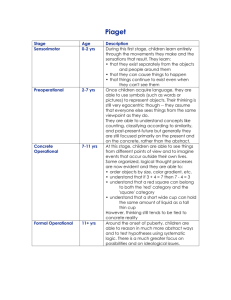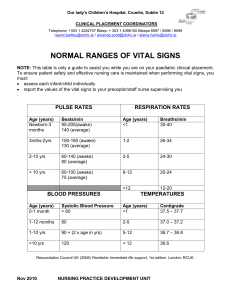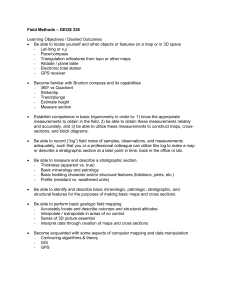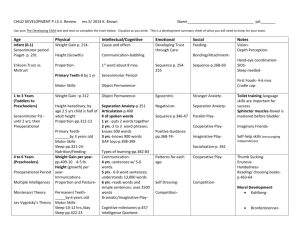pigati
advertisement
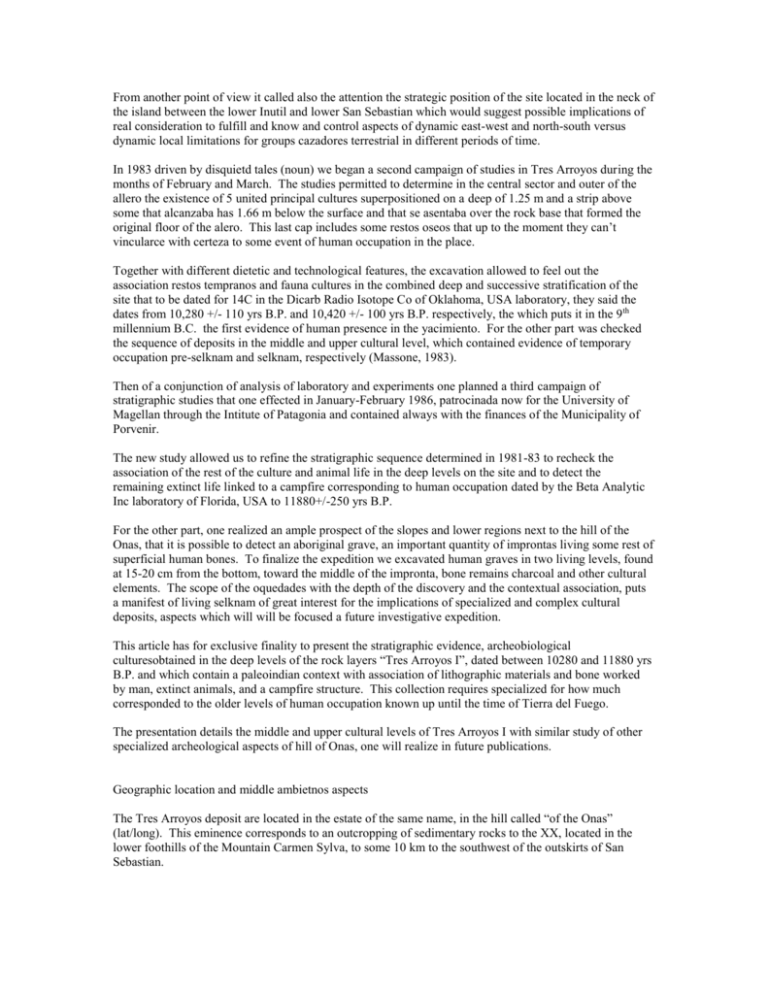
From another point of view it called also the attention the strategic position of the site located in the neck of the island between the lower Inutil and lower San Sebastian which would suggest possible implications of real consideration to fulfill and know and control aspects of dynamic east-west and north-south versus dynamic local limitations for groups cazadores terrestrial in different periods of time. In 1983 driven by disquietd tales (noun) we began a second campaign of studies in Tres Arroyos during the months of February and March. The studies permitted to determine in the central sector and outer of the allero the existence of 5 united principal cultures superpositioned on a deep of 1.25 m and a strip above some that alcanzaba has 1.66 m below the surface and that se asentaba over the rock base that formed the original floor of the alero. This last cap includes some restos oseos that up to the moment they can’t vincularce with certeza to some event of human occupation in the place. Together with different dietetic and technological features, the excavation allowed to feel out the association restos tempranos and fauna cultures in the combined deep and successive stratification of the site that to be dated for 14C in the Dicarb Radio Isotope Co of Oklahoma, USA laboratory, they said the dates from 10,280 +/- 110 yrs B.P. and 10,420 +/- 100 yrs B.P. respectively, the which puts it in the 9 th millennium B.C. the first evidence of human presence in the yacimiento. For the other part was checked the sequence of deposits in the middle and upper cultural level, which contained evidence of temporary occupation pre-selknam and selknam, respectively (Massone, 1983). Then of a conjunction of analysis of laboratory and experiments one planned a third campaign of stratigraphic studies that one effected in January-February 1986, patrocinada now for the University of Magellan through the Intitute of Patagonia and contained always with the finances of the Municipality of Porvenir. The new study allowed us to refine the stratigraphic sequence determined in 1981-83 to recheck the association of the rest of the culture and animal life in the deep levels on the site and to detect the remaining extinct life linked to a campfire corresponding to human occupation dated by the Beta Analytic Inc laboratory of Florida, USA to 11880+/-250 yrs B.P. For the other part, one realized an ample prospect of the slopes and lower regions next to the hill of the Onas, that it is possible to detect an aboriginal grave, an important quantity of improntas living some rest of superficial human bones. To finalize the expedition we excavated human graves in two living levels, found at 15-20 cm from the bottom, toward the middle of the impronta, bone remains charcoal and other cultural elements. The scope of the oquedades with the depth of the discovery and the contextual association, puts a manifest of living selknam of great interest for the implications of specialized and complex cultural deposits, aspects which will will be focused a future investigative expedition. This article has for exclusive finality to present the stratigraphic evidence, archeobiological culturesobtained in the deep levels of the rock layers “Tres Arroyos I”, dated between 10280 and 11880 yrs B.P. and which contain a paleoindian context with association of lithographic materials and bone worked by man, extinct animals, and a campfire structure. This collection requires specialized for how much corresponded to the older levels of human occupation known up until the time of Tierra del Fuego. The presentation details the middle and upper cultural levels of Tres Arroyos I with similar study of other specialized archeological aspects of hill of Onas, one will realize in future publications. Geographic location and middle ambietnos aspects The Tres Arroyos deposit are located in the estate of the same name, in the hill called “of the Onas” (lat/long). This eminence corresponds to an outcropping of sedimentary rocks to the XX, located in the lower foothills of the Mountain Carmen Sylva, to some 10 km to the southwest of the outskirts of San Sebastian. The place is located on a lateral border south of the vast depression of glacial origin, flanked on the terminal moraine of the Zorro system, which extends between the lower Inutil and lower San Sebastian (REF). In effect, during the Quaternary, one of the runs of ice in front of the Cordillera Darwin (Andes Fueginos) flowed along the western coast of the island Dawson, divided to form two runs; one oriented to the north advancing in the direction toward that which today constitutes the strait of Magellan, and the other diverted in a northwest direction excavating the lower Unitil lower San Sebastian depression. If well exists discrepancies of the principal authors in relation to the number of glacial advances in the Tierra del Fuego zone, those concur basically to consider that the advance of the major extension was the most ancient and one of the most ancient in the group of two or more glaciations and then subsequent advances of lesser extension delineated by terminal moraines (Op. cit). Finally, when the ice mantle receded toward the Cordillera before 12500 yrs B.P., (REF) the edge of the mantle was divided in wide tongues of ice, separated by sections of three high terrain formed as such large scale valley glaciers, like as the case with Bahia Inutil lobe. In actuality, the great depression located between the lower Inutil and San Sebastian, presents a stepped passage sufficiently XX of the XX XX dominating the west and southwest quadrant that does XX during most of the year. Only one encounters some degree of protection in the lower sections near the knolls in the ravines next to the erratic blocks of glacial origin that border the mountain Carmen Silva in the sector beside the lower Inutil blocks that diminish in frequency and size toward the western side of the same. For so much the formation “Cerro de los Onas”, that knows various rock shelters beside small arroyos, to the Guanaco swamp and the San Martin River, constitutes a XX element very peculiar to the district of Tres Arroyos that in actuality attracts attention to a great distance because of how many XX XX there are very few in the zone. Said hill, because of its condition of rocky eminence rises to 45 m over the level of the lower marshes for the courses of water indicated and the still present guanaco, zorros, corunros, and abundant birds, it ought to reunite the conditions for constituting a focus of attraction sufficiently strong for the temporary occupation of groups of nomads over distinct prehistorical periods, a sitatuation that has been able to be checked again of varied and rich registered archegological studies. Evidences of the poblamiento Paleoindian in Tres Arroyos Stratification, Chronology, and Cultural Context The pertinent cultural remains of the transient inhabitants of Tres Arroyos are deposited in two cappas situated between 60-80 and 125 cm from the base and form a large united stratification called Level 5, which can subdivide in small portions with dates situated between the 9 th and 10th millennium B.C. Level 5 is composed of coarse and very coarse sand poorly sorted of compact texture with a matrix of XX that is confined in color that is variously yellow and gray yellow, or clear depending on the area, and of possible fluvial origin (REF). Above this level 5, one encounters loose sandy levels of darker colors and of eolian origin that contains what appear to be more recent culture evidence corresponding to the present period of proto-selknam and selknam groups until it reaches the historical period of the surface level. Said levels constitute the whole of the deposit and what was deposited in the middle and upper deposits, respectively. For the other part, beneath level 5 one encounters a deposit to yet an older named level 6 that extends between 125 and up to 166 cm from the base where it comes up to the basal rock from the rocky sand. This level is conformed by loose and very loose sand of regular sorting with lime matrix. It presents a grey-yellow-clear color whose texture is still more compact than that of level 5 and is of fluvial origin (REF). The stratigraphic unit indicated contains some bony remains of mammoths and other unidentified save for some exceptions, that can be linked with some phase of occupation still more ancient than that has been dated to present. Nonetheless the existing evidence until now is very limited and disputable and none exists for the moment nothing surely tested that permits to sustain said hypothesis with the necessary solidity. Expeditions of Terrano 1981-1983 After the search began in November 1981 in the Quadrant A, where one was able to confirm the first time the presence of lithic and bony materials of presumably ancient deposition in the levels between 60-80 and 120 cm in depth (that was the maximum depth of the dig), one plans a larger excavating expedition to begin in 1983. During the second campaign, which took place in February and March of the indicated year, we were able to identify in Quadrants B and C, the basic stratigraphic column composed of 6 principal units or levels. The levels 1 2 and 3 (0 to 40-45 cm depth) of semi-compact sandy composition one encounters good conditions of preservation, it weighs to partial changes owing to the presence of some pockets of XX (Ctemnomy sp.) at the bottom of level 3 between 30 and 40-45 cm depth. Nonetheless, level 4 (40-45 to 60-70 cm depth) composed of very loose sand, shows significant change by abundant CdCXX. The ingress of said cavities one encounters outside the excavated quadrants and one delves into vertically until level 4. In order to split this unit, the rodent preferentially constructed horizontal tunnels, because below upper levels 1 2 3, they are left pretty much intact and over lower level 5 is very compact. All the way to level 4, it was possible to check during the same expedition the existence of two subunits that we called levels 5a and 5b, respectively. Level 5 a (60-70 to 95-100 cm depth) demonstrated to be of compact sandy composition with granules, of very clear yellow and brown-yellow color, with abundant XX matrix. This levels presents a very irregular appearance owing to the action of rodents in the upper centimeters of the deposit, where we detected the basis of their caves. However the remaining part of the layer is compact and unaltered. In the worked sector and unaltered level 5a one detected abundant animal remains associated with various lithic XX, a fragment of basalt scraper and a silicate instrument with a knife edge. The principal finds came from Quadrant B and around the said quadrant in the sector down to level 5a unaltered, we extracted a specimen of camel bones that were dispatched to Dicarb Radioisotope Company of Oklahoma, and returned the following result: Dic. 2732, 10280+/-110 yrs B.P. (8330 yrs B.C.) Level 5b, for its part is of very compact sandy composition with grey-yellow grains and it extends between 95-100 and 125 cm depth. In that unit, one encounters new remains of animals associated with some lithic waste and raw silicate material. One bone sample extracted from level 5b was dispatched to the same laboratory for 14C dating and brought the following result: Dic 2733, 10420+/-100 B.P. (8470 yrs B.P.). To observe newly the stratigraphic profile of the dig beginning in 1981, in Quadrant A one can test the existence of volcanic ash situated between 90 and 100 cm depth. Coincidentally in the north-south profile of Quadrants C to B excavated in 1983, it was possible to locate a large concentration of volcanic ash in the zone of contact between the units 5a and 5b, although also one appreciates in both strata a component of more dispersed XX matrix. The obtained tests up until this moment indicate that between 10420 and 10280 yrs B.P. in approximate form an important volcanic event had occurred in the region, a situation that is otherwise common to different early sites in Fuego-Patagonia. Laboratory analysis Once the expedition of 1983 concluded, the Argentine colleague Sergio Caviglia analyzed the remains of XX obtained in the excavation to test for the presence of Pseduoalpox avus so much as level 5a, like in level 3. Such identification left like this of manifest primary evidence sure of animals actually extinct for the Tres Arroyos site (REF). One of the fragments of this species that came from level 5a dated in 10280 yrs B.P., while the other remains corresponded to a level above 3 (Quadrant C) dated at 700+/-70 yrs B.P. was split for a sample of carbon. About the matter, it seems that the evidence of PseudoXX, in level 5a from approximately 10280 yrs B.P., is coherent with the detected early cultural context. However, considering that the remains of the same species recovered from level 3 presents an extremely debatable stratigraphic position/argument. If one considers he well known activity of the rodents of level 4, at the base of level 3 above, and the face of level 5a, it is feasible to think that the aforementioned bone fragment could have been removed before the position of the original deposit, but redeposited in a higher level. Facing this said alternative, it is convenient to take the preceeding of level 3 of Tres Arroyos with much caution. About this matter one considers it is not convenient to rest the hypothesis of survival of PseudoXX on a date so late as 700 yrs B.P. without finding a new more conclusive evidence. The other piece was sent to Argentine colleague Luis Guillermo Megoni, bone samples of other species, associated to the level of 10280 yrs B.P. for his identification. One of the remains because of its size and morphology seem to have the shape of a camelid of a larger size known for South America, it is possible its inclusion inside the somewhat varied of extinct aquanido, but in no way concludes given that Tierra del Fuego has recent discreet examples of guanaco of large size (REF). As to the study of the associated birds of level 5, we can personally realize a work of identification of species in the laboratory, between October and December of 1983 using for them the important collections of reference materials at the Institute of Patagonia and contained under the auspices of zoology of this aforementioned center of studies, Claudio Venegas. The analysis permitted determination of the existence of one fragment of humerus and another of carpal metacarpal pertaining to a bandurria TheriXX and a fragment of caiquen ChloeXX in level 5b from grid C. In level 5a was identified a fragment of sinsacto and a tibia of bandurria in grid B and two fragments of caiquen in grid a, corresponding to part of a carpal metacarpal and humerus according to shape. However, a significant part of the bird remains pertained to early levels which correspond to different species which we haven’t yet been able to be identified. In relation to local rodents in level 5, between various unidentified others one encounters some disarticulated remains of CternomysXX with evidence of burning, that which surely a probable relation with some sector of the campfire and the possibility that they were consumed by man. Nonetheless, other articulated remains seem to indicate a natural type of deposition. Finally, the three fragments of Conchas of caracol retrieved from level 5a in grid B were analyzed at the laboratory of Insitute of Patagonia by marine biologist Leonardo Guzman. It weighs to find the samples very polished on the face, given their age and the treatment of small pieces, he was able to conclude that they probably belong to the species AdelXX. From another perspective, with the intent to complete the related paleoXX studies with the deposit, we sent samples of sediments from all of the stratified layers that we studies to the Dr. Vera Markgraf of the University of Colorado-Boulder for analysis for possible remains of pollen. Nonetheless, until the corresponding chemical treatment she was able to establish a statistical contact of pollen in the upper level 1 and a general identification of pollen in levels 3 and 4. All of the samples have many spores of fungi and traces of carbon. Unfortunately it was not possible to identify remains of pollen in level 5 of the early occupations (REF). F IN DONE
